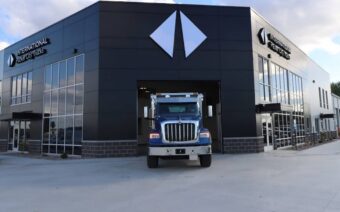
August 25, 2025
As we move into the second half of 2025, the landscape for small- and medium-sized business (SMB) leaders remains as volatile as ever.
With inflationary pressures, evolving customer demands and technological change reshaping how we work, it’s no wonder that growth feels elusive for many.
Yet, amid all this noise, one fundamental truth remains: If you want to grow your business, you must first win at the people-side of the business.
Across industries, SMB leaders cite three consistent barriers to growth: a lack of accountability and productivity, getting stuck in daily operations and – most pressing of all – people-related challenges.
It’s this third pain point that continues to trip up even the savviest business owners.
But what if solving your people problem wasn’t just possible, but actually the key that unlocks everything else?
Measurable impact
Hiring the wrong person, losing top performers or struggling with communication issues doesn’t just create frustration – it costs you money, momentum and morale.
The data is eye-opening: 80% of turnover is the result of a bad hire.
Turnover rates for SMBs are triple that of large firms.
Nearly 40% of employees leave within their first year – often due to a lack of clarity or development.
Engaged employees are not only more loyal but also help drive nearly 20% more operating income.
Conversely, teams with low engagement experience a 33% dip in profitability.
People issues may seem like soft problems, but their impact is hard and measurable.
Unclear roles lead to duplicated efforts and missed deadlines.
Underdeveloped managers can’t inspire their teams.
And poor communication causes friction that erodes trust.
These aren’t just HR problems – they’re business problems.
If you’ve ever felt like you can’t move the business forward because you’re constantly putting out fires, you’re not alone.
Many SMB leaders share the same frustrations:
- Turnover and hiring mistakes are draining resources
- There’s no clear path for employee development or promotion
- Performance reviews feel vague or disconnected from outcomes
- Team members don’t fully understand what’s expected of them
- Culture suffers because the people strategy doesn’t exist
When these problems pile up, growth stalls.
The leader becomes the bottleneck, and scaling becomes a pipe dream.
But what if you had a way to shift from reactive to proactive?
Communication for the win
The most overlooked solution to these challenges isn’t just about hiring better or increasing perks – it’s about communication.
Not just more meetings or Slack messages, but structured, intentional communication that brings clarity, direction and accountability.
Imagine what could change if your team consistently had transparent conversations about what’s working – and what isn’t; clear definitions of roles, responsibilities and expectations; regular 1:1s focused not on task updates, but on development; and a common language for feedback, growth and performance.
Businesses that create an environment for honest, open and transparent (HOT) conversations see a transformation – not just in employee engagement, but in output, innovation and loyalty.
When people feel heard and valued, they give their best.
When they know what’s expected, they deliver.
And when they see a future, they stay.
Part of the strategy
Most small business owners built their companies on gut instinct.
That’s a superpower – but it can’t scale.
To solve people-related issues in a sustainable way, you need systems that support structure, alignment and consistency.
A forward-thinking approach includes talent planning at every level so that everyone knows how their role contributes to company goals.
It ensures people decisions are tied directly to business strategy.
It leverages behavioral insights like DISC to help match people to the right roles and build stronger teams.
It involves structured growth plans, clear feedback frameworks and performance support to help your best people become your future leaders.
And it includes organizational visibility – so you can see not only where your talent stands today, but what you’ll need tomorrow.
Picture your business a year from now.
Your new hires are thriving from day one.
Managers are developing into true leaders.
Accountability is high and communication is clear and consistent.
Turnover is down, and your culture is strong.
Most importantly, you’re no longer stuck in the weeds – you’re steering the ship, confidently.
That vision is achievable – not through a silver bullet, but through intentional leadership and structured talent planning.
As you chart your growth strategy for the remainder of 2025 and beyond, ask yourself this: Am I investing enough in solving the people challenges that are holding us back?
It’s tempting to focus on marketing campaigns, product upgrades or operational efficiencies.
But if your people aren’t aligned, engaged and developed – those investments won’t go far.
The businesses that will thrive in the next decade are the ones that get this right.
They win not just by having great products or services, but by being great places to work.
You don’t have to do everything at once.
But you should take the next step to win at talent.
Begin by getting clear on roles.
Schedule regular, purposeful 1:1 check-ins.
Use behavioral science to better understand your team and have real, honest conversations.
Because in the end, your people don’t just power your business – they are your business.
And when you grow your people, you grow your business.
 Venture Ag Drones ‘takes flight’ in Langlade County
Venture Ag Drones ‘takes flight’ in Langlade County River Falls brewery/restaurant/cocktail lounge in full swing
River Falls brewery/restaurant/cocktail lounge in full swing








